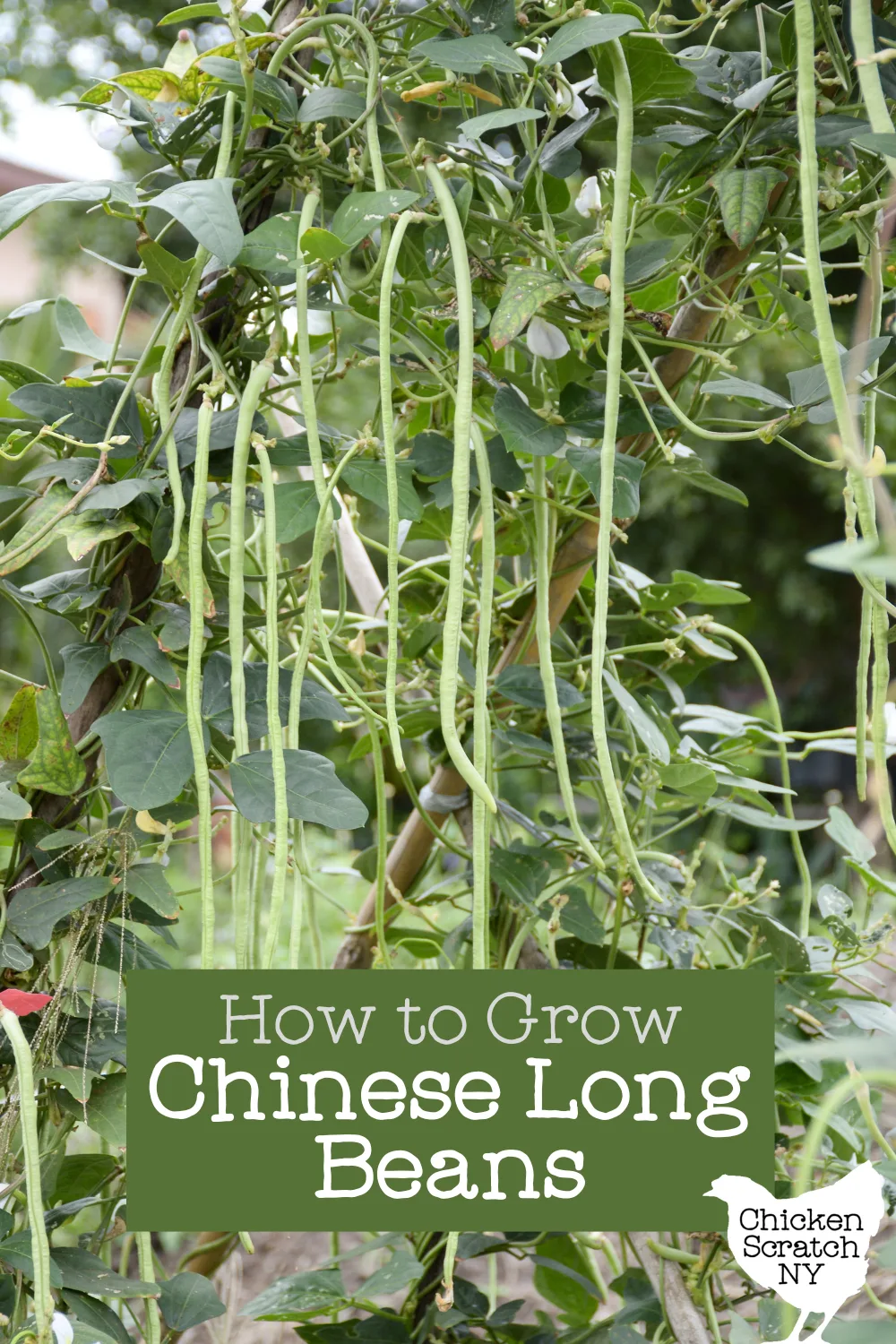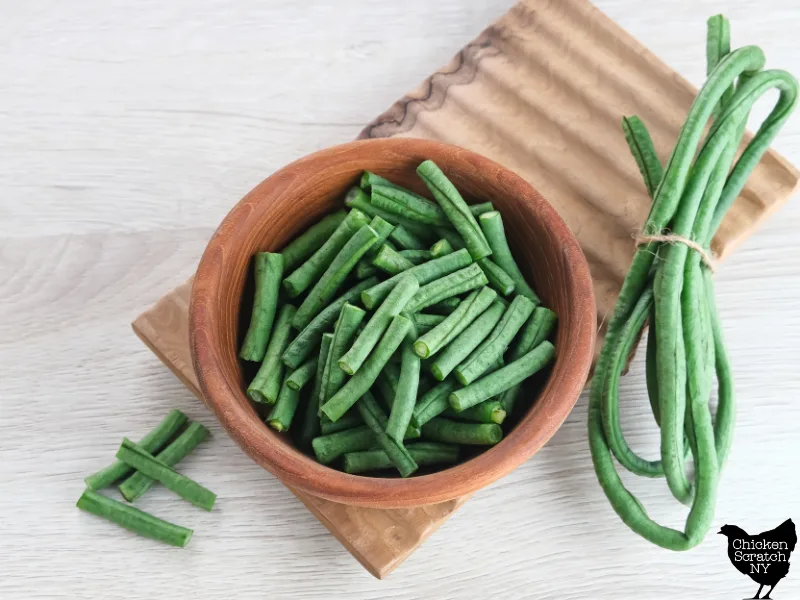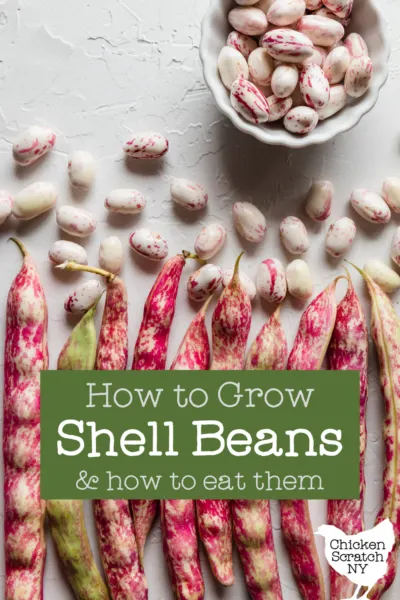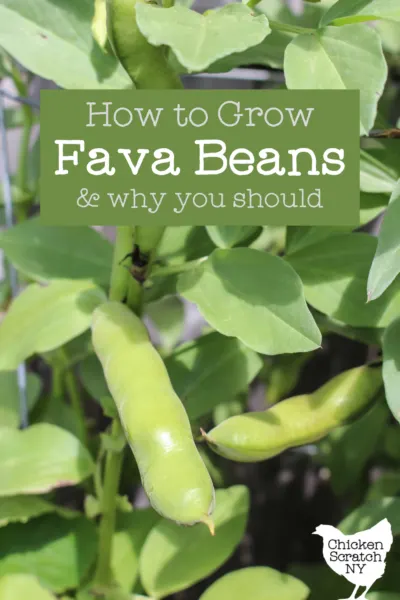Chinese yard long beans or Asparagus beans will make a productive and easy addition to your summer garden! The heat-loving plants scramble up polls and trellises for an easy-to-pick harvest.

Asparagus beans go by many names, including yardlong beans, Chinese long beans, bodi, snake beans, and long-podded cowpea. They are more formally known as Vigna unguiculata ssp. sesquipedalis.
Common names can confuse things so be careful not to mix them up with the winged bean (Psophocarpus tetragonolobus) or the winged pea (Lotus purpureus) which are also called asparagus peas.
I know Latin names can be a lot but when it comes down to figuring out what you’re actually growing and eating they’re nice to have, especially when you stray away from the basics.
Fun fact, sesquipedalis means ‘one and a half foot’ in Latin, a more accurate representation of the size of the beans than the common “yard long” name.
Asparagus beans are more closely related to cowpeas than the common garden bean (Phaseolus vulgaris) even though they’re called beans, not peas. Black-eyed peas are the most common cowpea eaten in America but cowpeas in general are much more popular in Africa.
Cowpeas are one of the earliest domesticated crops, they’re been found in archeological sites in Central Ghana dating back 4 thousand years.
They are believed to have originated in either West Africa, where the greatest cowpea diversity is found, or in East Africa based on molecular markers.
Either way, they thrive in the dry, sandy soil where most things won’t grow and offer up a much-needed source of nutrition in semi-desert regions.
It’s largely believed that the subspecies known as Asparagus beans come from a separate domestication event in Southeast Asia.
Does any of this matter when it comes to growing them? Absolutely not, but it’s fun and there is too much snow outside to do anything other than geek out over beans.
Yardlong Bean Varieties
If you want to grow Asparagus beans in your garden your best bet will be ordering seeds online.
I was able to find a generic pack of green “Asparagus Bean, Yard Long” at Lowe’s from Ferry-Morse. I’m going to grow them just for the fun of it but if you want to grow a named variety you’ll have to look to the web.
- Akasanjaku Yard Long Bean – 75 days, heirloom
- Chinese Red Noodle Yard Long – 50-80 days, red pods with brown seed
- Mosaic – red, purple & green pods
- Purple-Podded Asparagus – 79 days, purple pods with brown seed
- Taiwan Black – 52 days, pale green with black seeds
- White Galaxy – 55 days, very pale white-green pods
- White Seeded – 65-75 days
How to Grow Asparagus Beans
Once you’ve got your seeds all that’s left to do is wait for warm weather. Yardlong beans are even more sensitive to cold than green beans and won’t grow until summer.
The plants are happiest when the temperature is 70-80 degrees and they’re exposed to full sun.
The twining plants should be planted at the base of a trellis or pole so they have something to grow up. Plant the seeds 1″ deep and 8 inches apart after soaking overnight to jump-start germination.

Keep the seeds watered daily until the seed leaves appear, then you can switch to watering a few times a week. When the plants are a few inches tall add a layer of mulch around the base to help maintain consistent moisture and prevent weeds.
Asparagus bean plants can get huge, from 6 feet tall all the way up into the 12-foot range, so make sure you’re planting them on a sturdy trellis, especially if you’re in a windy area.
Depending on the variety you’ll start to see flowers and beans in 2-2.5 months. Like with pole beans, keep them picked and they’ll keep coming.

The flowers usually grow in pairs and look a lot like the rest of the pea and bean flowers you’re probably already familiar with.
For fresh eating, plan to harvest the pods frequently, when they reach 12-15 inches long. They can get much bigger but that’s when you’ll get the best texture and flavor.
In the Kitchen
You won’t find many mentions of yard-long beans in your traditional ‘American’ cookbooks.
It may be tempting to swap them out for green beans in your favorite recipes but keep in mind that they get easily waterlogged and quickly become unappetizing if boiled or streamed for too long.

For the best results, save them for recipes where the beans are stir-fried, fried, or sauteed. You can also eat the beans raw, fresh from the garden, or blanched and turned into salads.
Here are a few to get you started:
- Stuffed Long Beans from Wooheng
- Dry-Fried Long Beans and Minced Pork with Olive Vegetables from Pups with Chopsticks
- Chinese Long Bean Salad from Asian Cooking Mom
- Sichuan Style Stir-Fried Chinese Long Beans from Simply Recipes
- Chinese Yard Long Bean Stir Fry with Pork from Sow the Table
- Long Bean Stir Fry with Bacon from Cooking with Nart
Check out my Vegetable Garden page for more ideas or start here:




Dirk
Tuesday 12th of September 2023
Hi Alecia: Thank you for summarizing the yard long beans. Came upon your website when I searched the "White Galaxy" Asparagus Beans. I have grown yard long beans for a long time and have tried a few different varieties. We like the white yard long beans the most. However, the white yard long beans always took longer to start to bear beans. I got my seeds from Kitazawa and Trade Winds Fruit. I have never tried White Galaxy and may try it if seeds are available from Southern Exposure in 2024. Thank you.